People
‘It’s a Sensual Kind of Experience of the World’: Julie Mehretu on Why She’s Letting Intuition Guide Her Art Practice Now More Than Ever
The Ethiopian-born artist spoke to Artnet about what she does to creatively recharge.
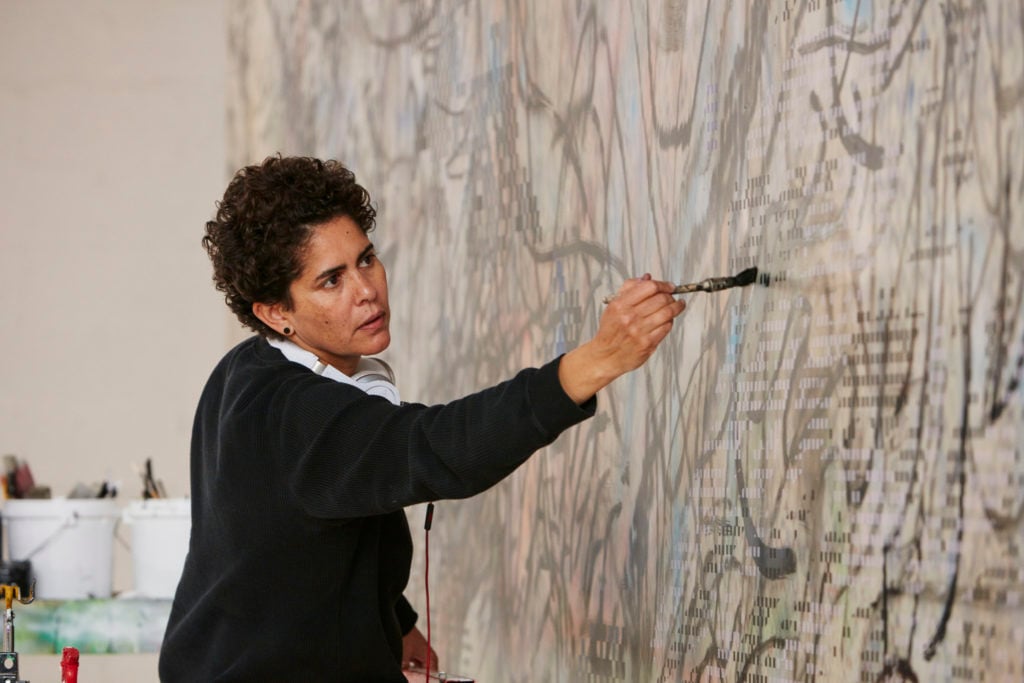
The Ethiopian-born artist spoke to Artnet about what she does to creatively recharge.

Hilarie Sheets

In February, Julie Mehretu was deep in the process of painting a large-scale diptych for the Whitney Museum of American Art in New York, where her mid-career survey opens on Thursday after previous runs at the Los Angeles County Museum of Art and the High Museum in Atlanta.
On a Zoom call from her Chelsea studio, which overlooks the Hudson River and New York Harbor, Mehretu said the wall for her new site-specific work at the Whitney faces windows onto the same view of the Statue of Liberty. The artist, who was born in Ethiopia and raised in Michigan, described the symbolic point of entry to the United States as a conceptual departure point from which to consider the history of migration, as explored in her multilayered abstract painting. For the piece, she also incorporated blurred photographs of riotous anti-immigration protests screen-printed onto the canvas, and considered historical artworks such as Théodore Géricault’s Raft of the Medusa when approaching her gestural mark-making.
It is an especially relevant time, given the global pandemic and social upheaval of the last year, to think about Mehretu’s work, in which she has embedded specific references to mapping, architecture, cityscapes, and most recently protests, across which her vocabulary of abstract marks swirl and surge, moving collectively and breaking apart.
Between bites of her lunch, Mehretu, 50, shared how she recharges and maintains her creative practice, how intuition figures into her work, and what it was like spending the first six months of 2020 with her ex-wife, artist Jessica Rankin, and their two sons, ages 10 and 15, whom they co-parent in the Catskills at Denniston Hill, an artists’ collective and residency Mehretu co-founded with fellow artist Paul Pfeiffer and art historian Lawrence Chua.
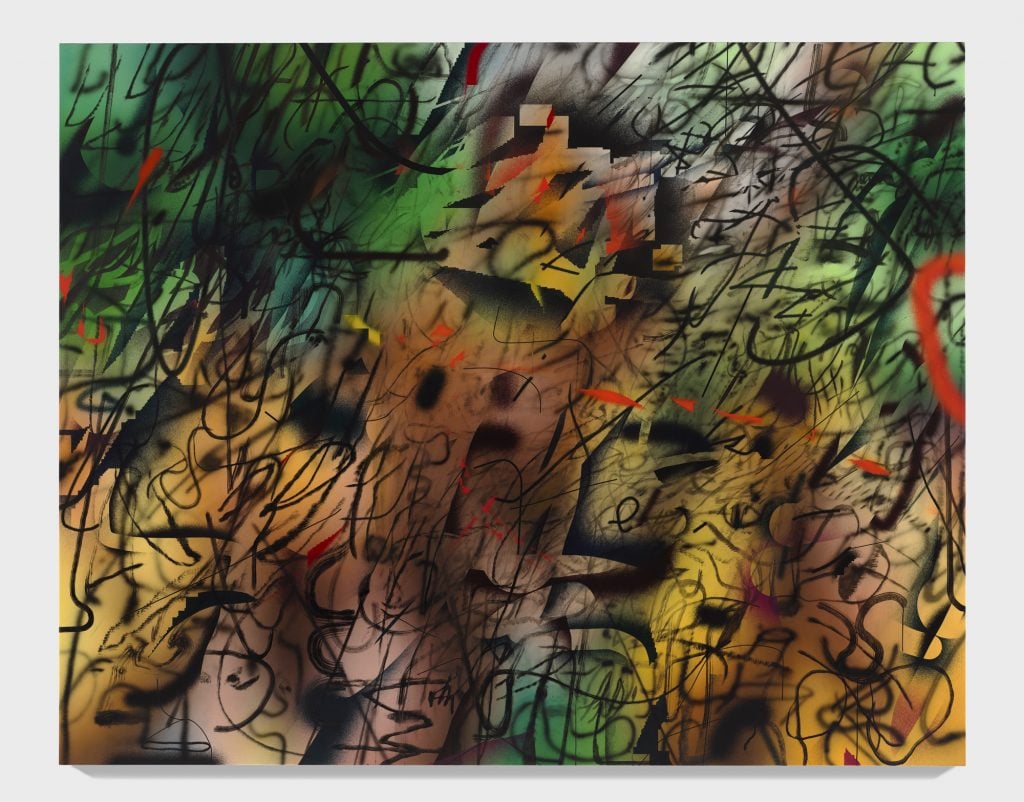
Julie Mehretu, Loop (B. Lozano, Bolsonaro eve) (2019–20). Courtesy of the artist and Marian Goodman Gallery. Photo credit: Tom Powel Imaging. Copyright: Julie Mehretu.
Denniston Hill, your artist residency, seems like a good place to start a discussion about how you recharge creatively. Has that been a generative landscape for you?
It was a place that was very important to me when I made my first show at the Project in 2001. Jessica and I used to go up regularly, but then we formalized the residency program about 7 years ago and we stopped using the house. But last March, when the kids’ school closed because of the pandemic, we filled a U-Haul with paintings that I had done the first layers of and set up camp there, just us and the caretaker. It’s so quiet. It’s really rural.
Usually travel is a way that I recharge creatively—whether it’s going to see the Temple of Karnak in Luxor or Buddhist paintings in ancient caves in Western China. Even if we’re taking the kids to the beach in Tulum, we also try to go to [the ancient Maya city] Chichén Itzá or Mexico City. Visiting and seeing and experiencing and studying is always such a part of recharging for me. And upstate, I had to be cool with just being in this rural place.
Were you okay with that?
Totally. We planted trees, we got lost in gardening. There’s a whole area outside my studio that I dug out and planted lavender and flowers. I’ve never done that. Watering them at the end of the day was part of my ritual there. There was a hummingbird that died in my studio that I buried outside, so I put flowers on the hummingbird’s grave every morning. That was another ritual. You get embedded in this other reality, and paying attention to what you can eat and forage from the land was really great. Meditation also got me through being in the same bed for longer than I think I’ve been in the same bed for over 10 years.
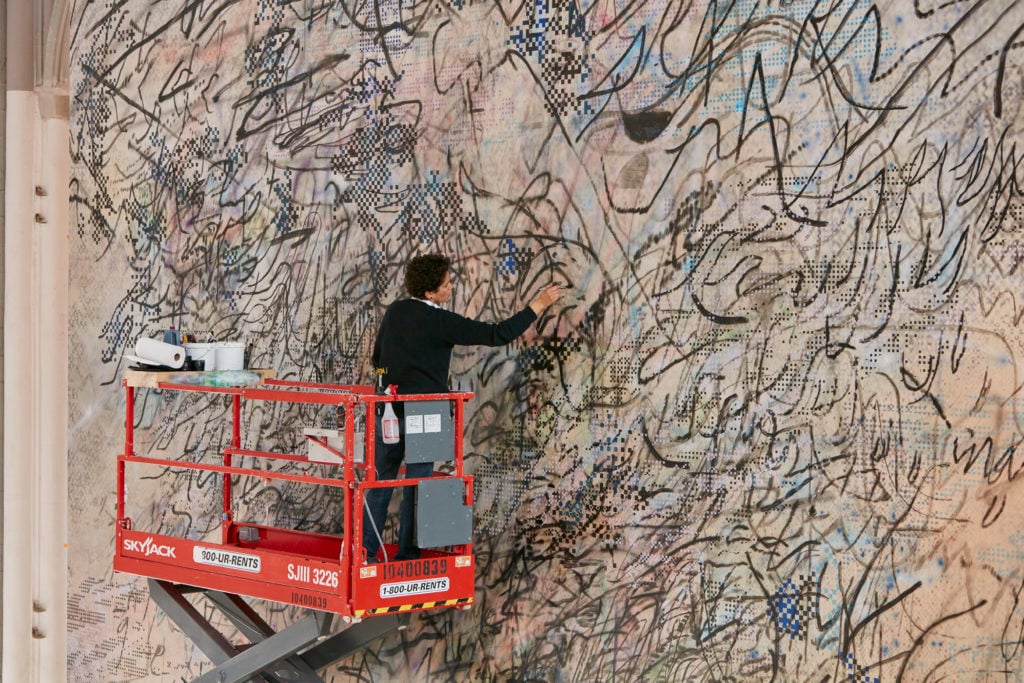
Julie Mehretu at work. Courtesy the artist and Marian Goodman Gallery © Julie Mehretu; photo Tom Powel Imaging, Inc.
How long have you been meditating?
I started studying it when I was installing my show in LA and I’ve been doing it every day for the last year and a half.
What prompted you to make that decision?
Sidney Felsen, who runs Gemini G.E.L. [a printmaking studio in LA], always told me he meditates. There’s a certain calmness to him. I was really excited about installing the show, a momentous occasion culminating five years of us working on it, and 25 years of [paintings]. I can be very emotionally responsive to things and I needed to stay calm and healthy. I practice yoga, I run, I do all these other things. But I needed something to keep my mind from not going over the edge too much.
Is there anything you’re reading that informs your work?
Everything does. Last year when I was making those paintings upstate, Moby Dick was really important to me. I had never read that. I was listening to it and reading it in the first month- and-a-half of the pandemic. I listen to books when I have insomnia. It’s a way I get through two hours of the night. It was such an interesting time to get lost in listening and then rereading parts.
The seven paintings you completed at Denniston Hill, exhibited in the front room at Marian Goodman gallery late last year, had a much starker tone than the earlier works in the show. Were you feeling very influenced by the moment?
I think so. The cognitive confusion of time, the political vertigo that we all were going through, it was all really dizzying. There was a sense of catapulting into further disaster. The real confrontation with human mortality and the fear around how it might impact everybody you care about was being processed through the work. I intentionally did not work with a brush and ink and handmade marks like I normally do. I was working with this ephemeral airbrush.
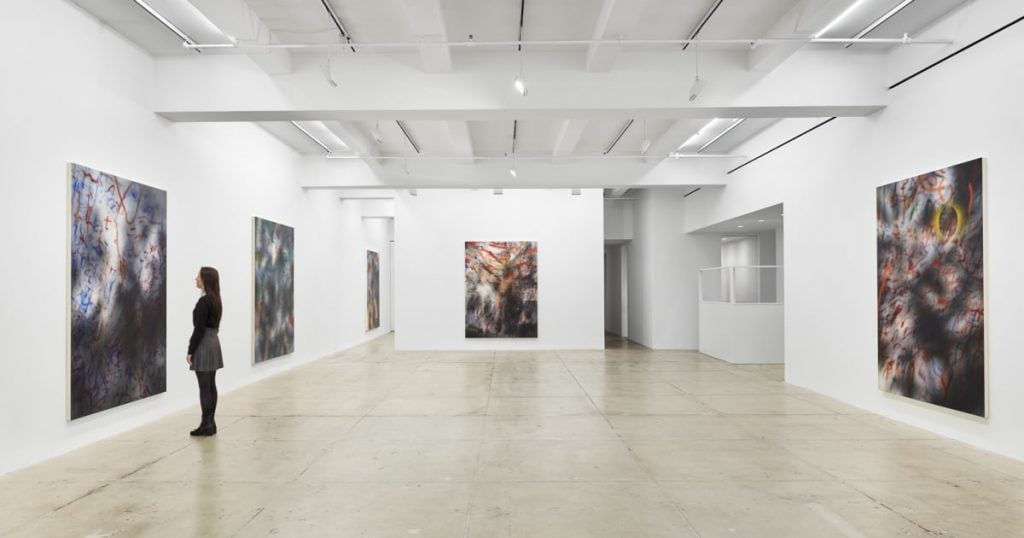
Installation view of “Julie Mehretu: About the space of half an hour” at Marian Goodman Gallery, New York. Photo courtesy of Marian Goodman Gallery, New York.
Are you more open to following your intuition or a kind of emotional intelligence now than earlier in your career?
Throughout the pandemic, I’ve been thinking a lot about the role of intuition. It’s a sensual kind of experience of the world, and of time and place. It’s almost a place where your body digests time. That’s a place I try to access and have always. Getting to be more mature as an artist means becoming more in touch with those sides of how to make.
Are you looking at much art, either online or in person?
Yes, since we’ve been back in the city, I’ve tried to see everything in the galleries and museums that I can. I’ve been to the Met a few times. You could almost go to another country at the Met. Getting out of the studio and not working makes me feel I can come back to whatever I’m working on, even if it’s totally unrelated, with a renewed capability of seeing. Doing that through museum visits, books, and films has been really important, especially when we haven’t been able to move physically.
What have you watched that’s been helpful?
I May Destroy You was an amazing series. My kids love trash TV, so we watched a lot of stuff like the South Park Pandemic Special. Parenting fail! My brother-in-law gave us a [USB stick] with a ton of movies on it. With the kids, we watched all the Hitchcock movies and a lot of other great old films. It was almost like film school.
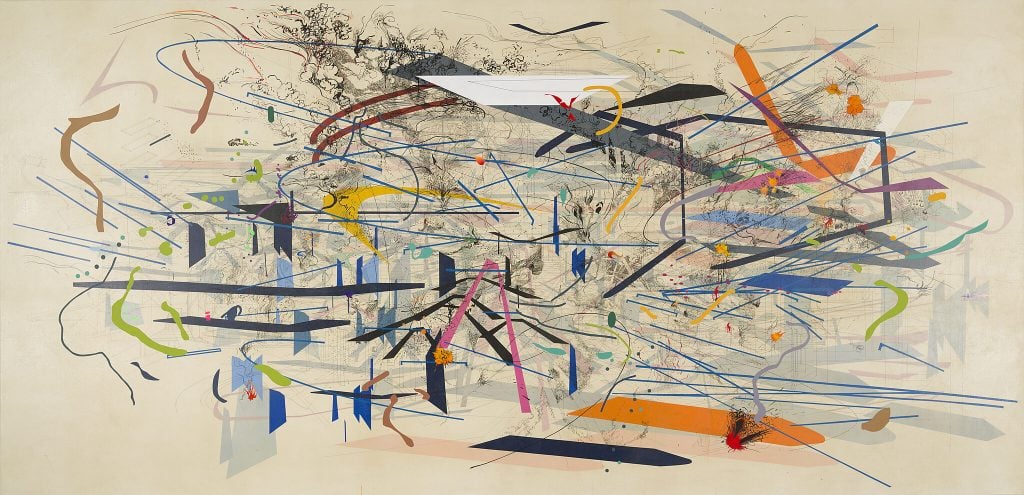
Julie Mehretu, Retopistics: A Renegade Excavation, (2001). Photograph by Edward C Robinson III.
Has it been difficult having your museum survey bracketing the pandemic?
I feel really grateful the survey is still happening. There were a couple months for the LA show that were eclipsed by the pandemic. The whole tour was re-organized because the Whitney was closed, so it went to the High Museum first. It was the first time I ever installed a show fully on Zoom. I didn’t travel to see it. That’s a very big disappointment: to not see it myself. Showing this work in places outside coastal centers like Atlanta and Minneapolis, where it goes to the Walker [Art Center] after the Whitney, is really important to me. Having been raised in the midwest and knowing what you have access to makes these other kinds of art spaces hugely important. We wanted to ensure that [they would be included] when we were organizing the tour. There’s a huge history of cultural making in Atlanta and to have an artist like me, in an institution like the High Museum, offers something else for a younger audience studying what’s possible in abstraction in visual art.